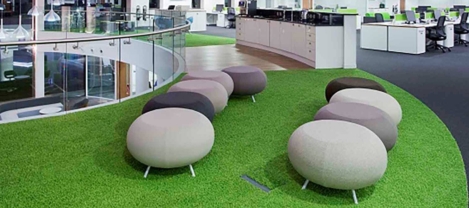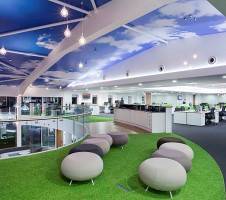September 22, 2015
Top employers for working families praised for flexible approach 0
 The financial sector is well represented in this year’s annual list of Top Employers for Working Families as announced by charity Working Families. American Express, Barclays Bank, Citibank, Deloitte and Lloyds all made the list, while just two public sector organisations Ministry of Justice and Southdown Housing Association were in the top ten. Employers with up to 250 employees that reached the Small Employer’s Benchmark – ranged from law firm Sacker & Partners LLP to Bristol Students’ Union. To enter the awards, which are sponsored by Computershare, organisations must complete a benchmark survey which examines in detail their flexible and family friendly working policies and practices. As flexible working becomes embedded in more organisations, Working Families is calling on employers to ‘adopt a ‘flexible by default’ approach, to continue the rise in flexible working and help everyone to achieve a work life balance that works for them.’
The financial sector is well represented in this year’s annual list of Top Employers for Working Families as announced by charity Working Families. American Express, Barclays Bank, Citibank, Deloitte and Lloyds all made the list, while just two public sector organisations Ministry of Justice and Southdown Housing Association were in the top ten. Employers with up to 250 employees that reached the Small Employer’s Benchmark – ranged from law firm Sacker & Partners LLP to Bristol Students’ Union. To enter the awards, which are sponsored by Computershare, organisations must complete a benchmark survey which examines in detail their flexible and family friendly working policies and practices. As flexible working becomes embedded in more organisations, Working Families is calling on employers to ‘adopt a ‘flexible by default’ approach, to continue the rise in flexible working and help everyone to achieve a work life balance that works for them.’










 The number of firms planning to expand in London is at its highest level (50 percent) since 2012, though retaining employees and improving the capital’s infrastructure remain key concerns. According to the re-launched
The number of firms planning to expand in London is at its highest level (50 percent) since 2012, though retaining employees and improving the capital’s infrastructure remain key concerns. According to the re-launched 
 Newly published research
Newly published research
 A new meta analysis compiled by researchers from Harvard Business School and Stanford University raises questions about the way Government and organisational policies designed to tackle the problems of work related health costs in the United States have largely ignored the health effects of ‘psychosocial workplace stressors’ such as high job demands, economic insecurity, and long work hours. The analysis of 228 existing studies assessed the effects of ten workplace stressors on four specific health outcomes. The researchers claims that job insecurity increases the odds of reporting poor health by about 50 percent, high job demands raise the odds of having a diagnosed illness by 35 percent, and long work hours increase mortality by almost 20 percent. They argue that any policies designed to address these issues should account for the health effects of the workplace environment.
A new meta analysis compiled by researchers from Harvard Business School and Stanford University raises questions about the way Government and organisational policies designed to tackle the problems of work related health costs in the United States have largely ignored the health effects of ‘psychosocial workplace stressors’ such as high job demands, economic insecurity, and long work hours. The analysis of 228 existing studies assessed the effects of ten workplace stressors on four specific health outcomes. The researchers claims that job insecurity increases the odds of reporting poor health by about 50 percent, high job demands raise the odds of having a diagnosed illness by 35 percent, and long work hours increase mortality by almost 20 percent. They argue that any policies designed to address these issues should account for the health effects of the workplace environment.




















September 22, 2015
John Fogarty reflects on a career in office furniture spanning five decades 0
by John Fogarty • Comment, Furniture, Workplace design
(more…)